Abstract
The quantitative distribution of the flavanone-7-neohesperidoside, naringin, in seeds, seedlings, young plants, branches, flowers, and fruit of Citrus paradisi Macfad., cv `Duncan' was analyzed by radioimmunoassay. High levels of naringin were associated with very young tissue and lower levels were found in older tissues. Seed coats of ungerminated seeds and young shoots had high naringin concentrations whereas cotyledons and roots had very low concentrations. Light-grown seedlings contained nearly twice as much naringin as etiolated seedlings and, in young plants and branches, the naringin content was highest in developing leaves and stem tissue. In flowers, the ovary had the highest levels of naringin, accounting for nearly 11% of the fresh weight. There was a net increase in the total naringin content of fruits during growth. However, due to the large increase in fruit size, there was a concomitant decrease in the naringin concentration as the fruit matured.
Full text
PDF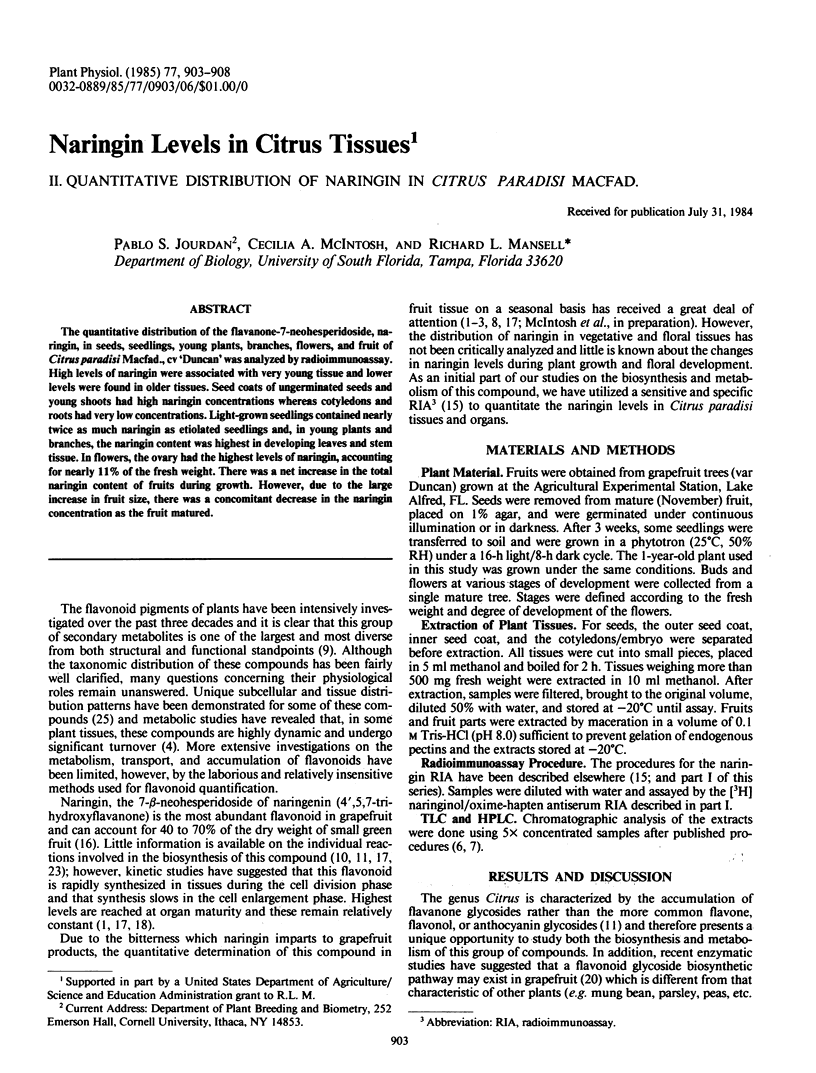
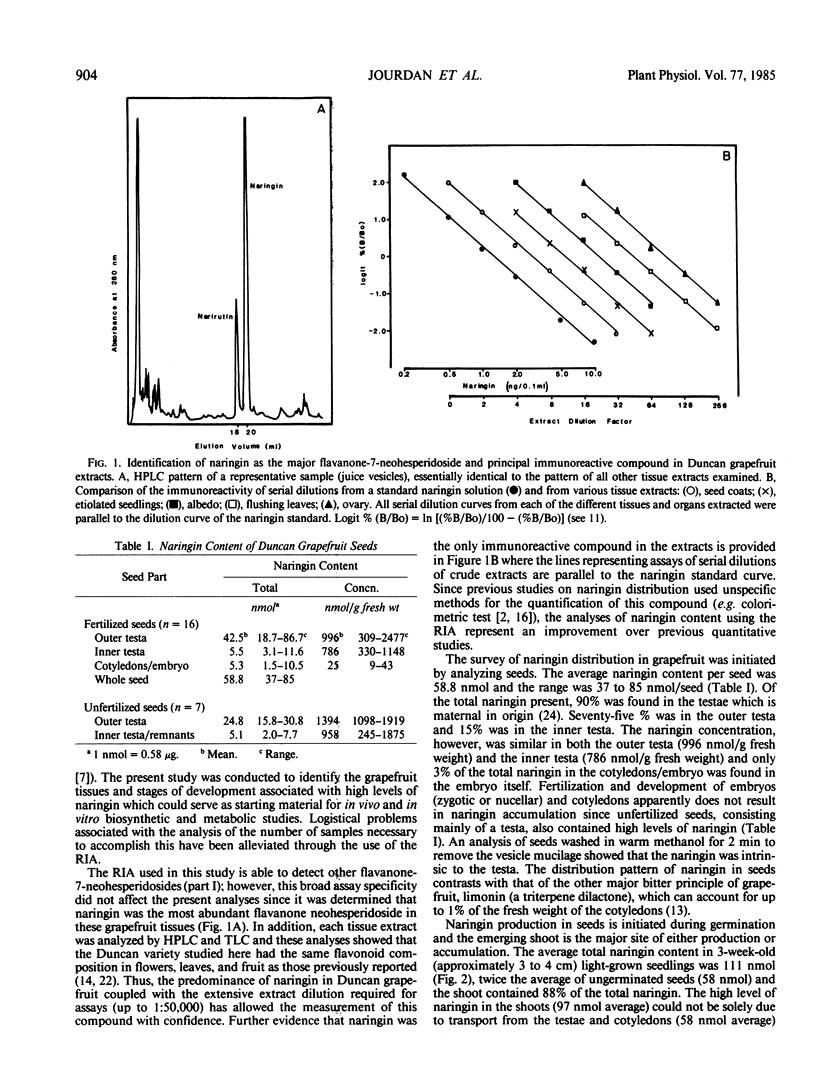
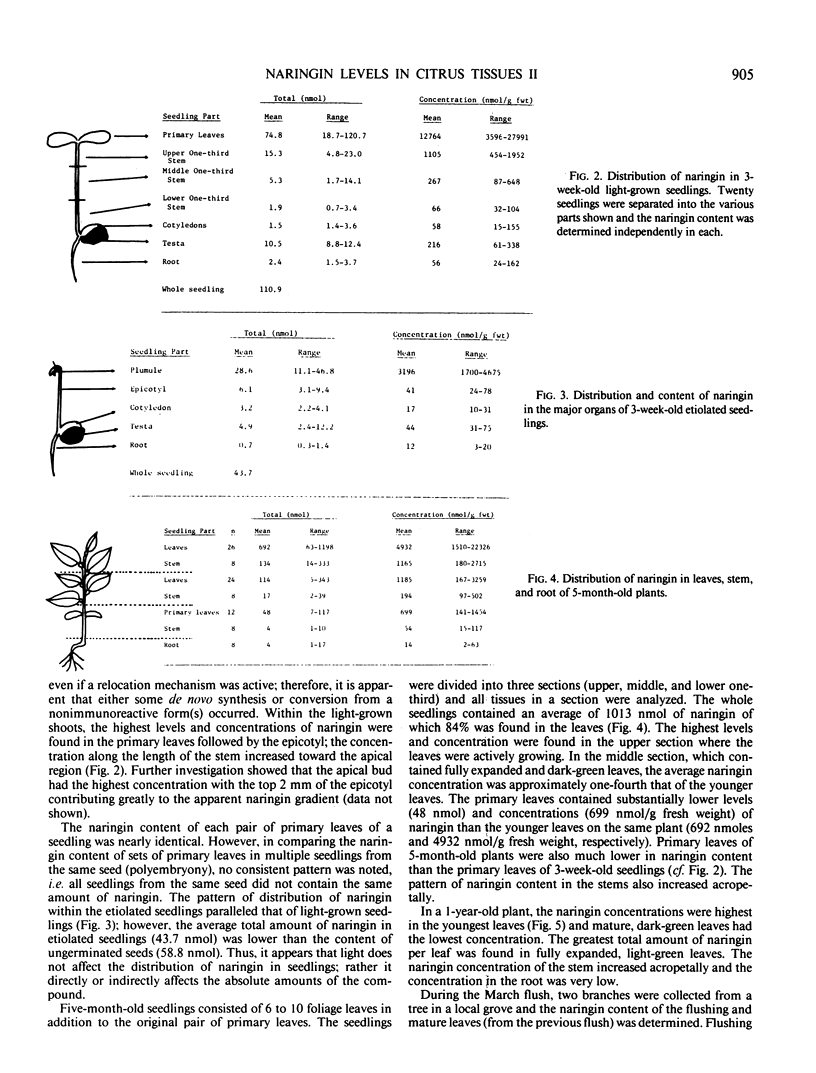
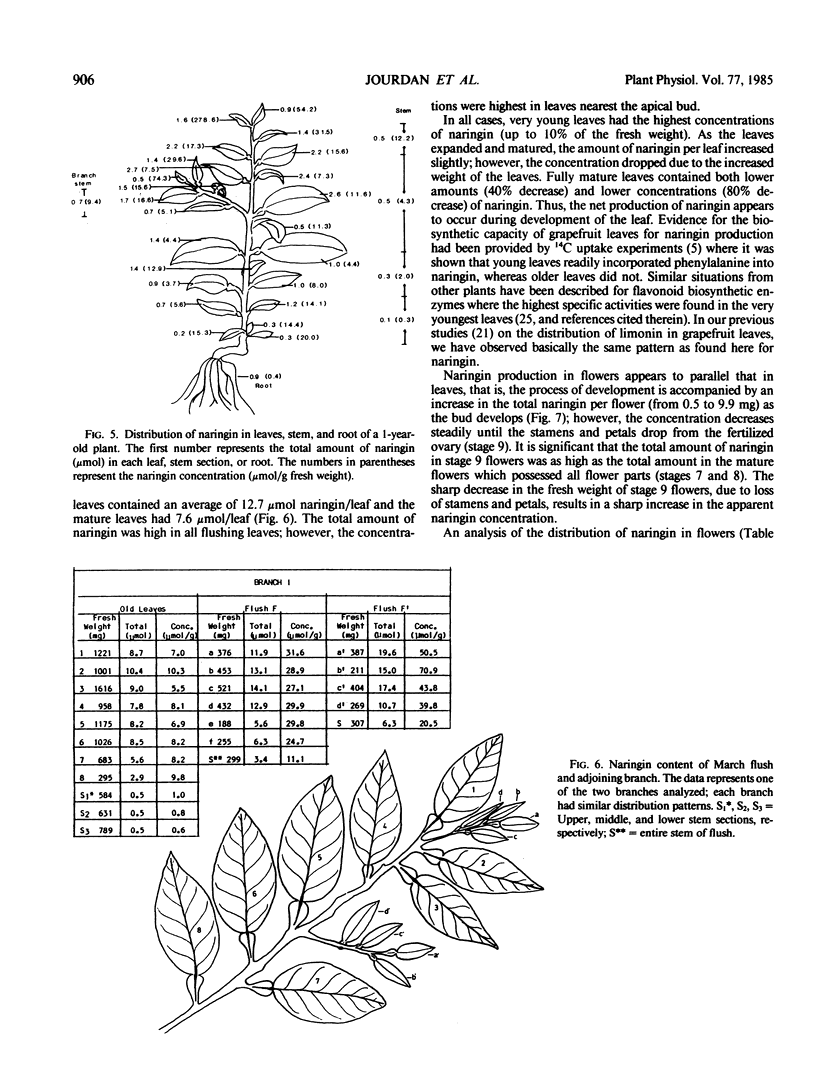
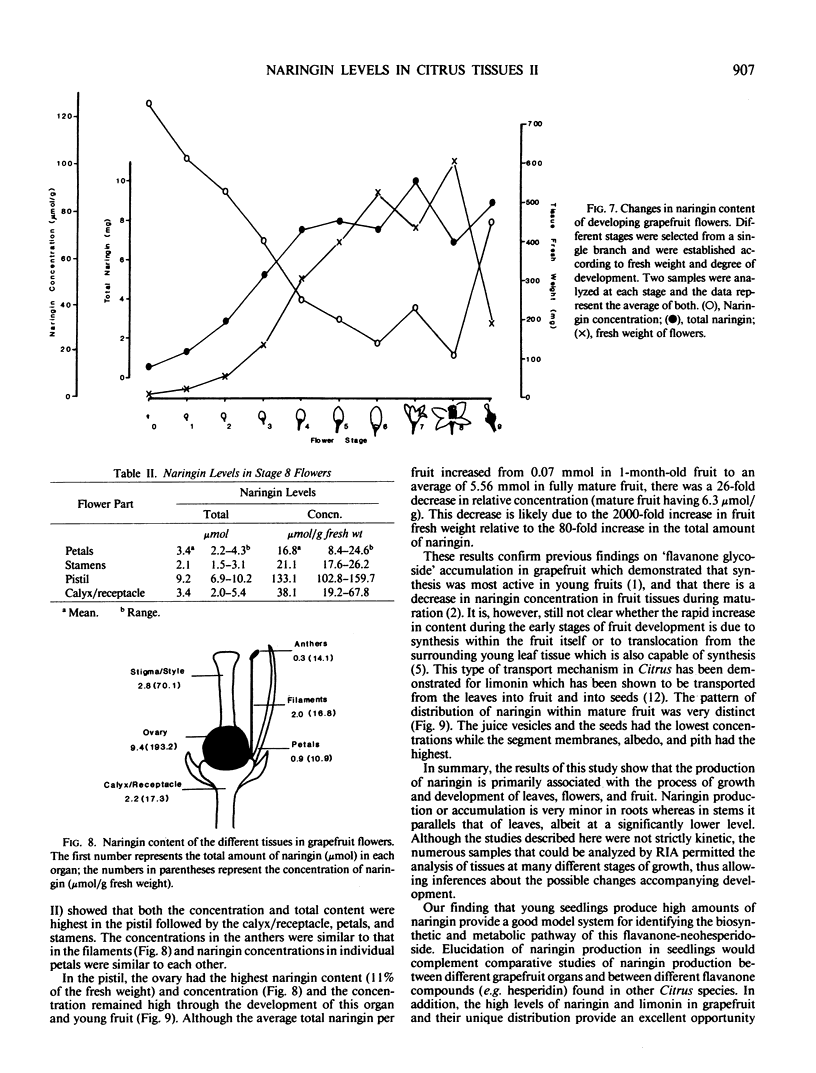
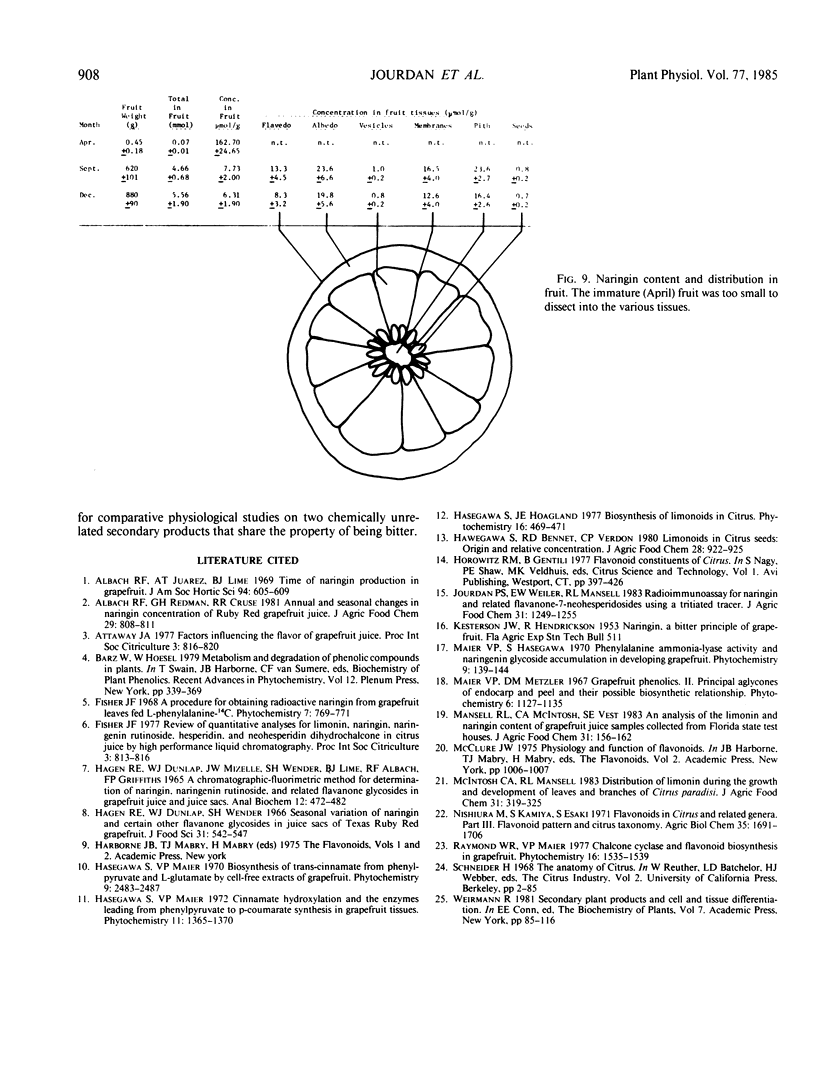
Selected References
These references are in PubMed. This may not be the complete list of references from this article.
- Albach R. F., Redman G. H., Cruse R. R., Petersen H. D. Seasonal variation of bitterness components, pulp, and vitamin C in Texas commercial citrus juices. J Agric Food Chem. 1981 Jul-Aug;29(4):805–808. doi: 10.1021/jf00106a030. [DOI] [PubMed] [Google Scholar]
- Hagen R. E., Dunlap W. J., Mizelle J. W., Wender S. H., Lime B. J., Albach R. F., Griffiths F. P. A chromatographic-fluorometric method for determination of naringin, naringenin rutinoside, and related flavanone blycosides in grapefruit juice and juice sacs. Anal Biochem. 1965 Sep;12(3):472–482. doi: 10.1016/0003-2697(65)90213-7. [DOI] [PubMed] [Google Scholar]


